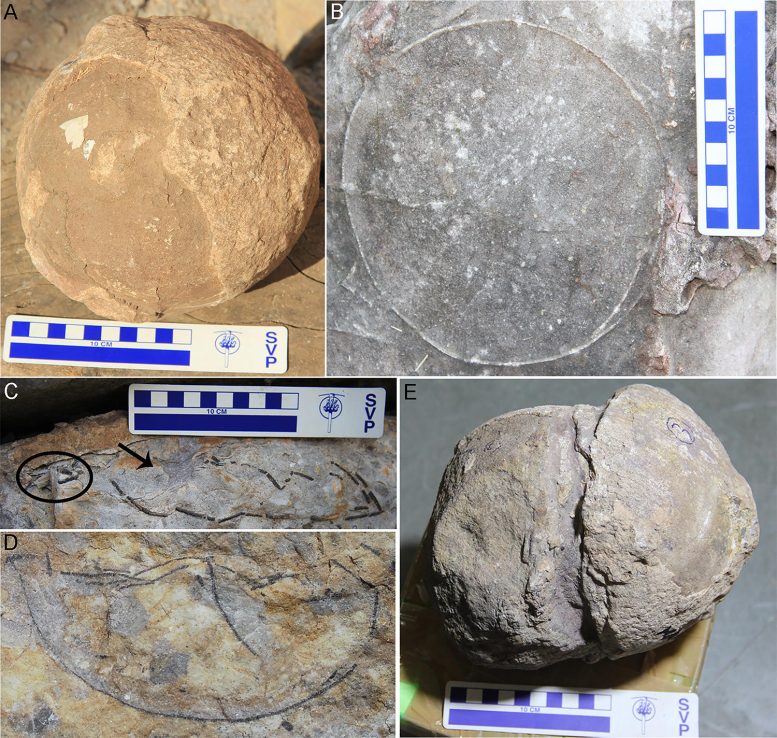
(A) Completely unhatched egg from the clutch P43. (B) Almost fully intact circular outline of the egg possibly indicating it to be unhatched and no loose eggshells are found in the clutch P6. (C) Compressed egg from clutch DR10 showing hatching window (arrow showing gap) and a few eggshells collected just around the hatching window (circled) which possibly represent the remnants of hatching window. (D) Egg from clutch P26 showing curved outline. (E) Deformed egg from clutch P30 showing egg surfaces slipping past each other. Dhiman et al., 2023, PLOS ONE, CC-BY 4.0
Fossilized eggs provide insights into the reproductive, nesting, and early life behaviors of the titanosaur.
The discovery of over 250 fossilized eggs provides a wealth of information about the lives of titanosaurs in the Indian subcontinent, according to a study recently published in PLOS ONE by Harsha Dhiman of the University of Delhi and his team.
The Narmada Valley in central India is famous for its Lameta Formation, which holds fossils of dinosaur skeletons and eggs from the Late Cretaceous Period. Recent excavation in the area uncovered 92 nesting sites filled with 256 fossilized eggs belonging to the titanosaurs, some of the largest dinosaurs to ever exist. Through a thorough examination of these nests, Dhiman and his team were able to gain new knowledge about the lifestyles of these dinosaurs.
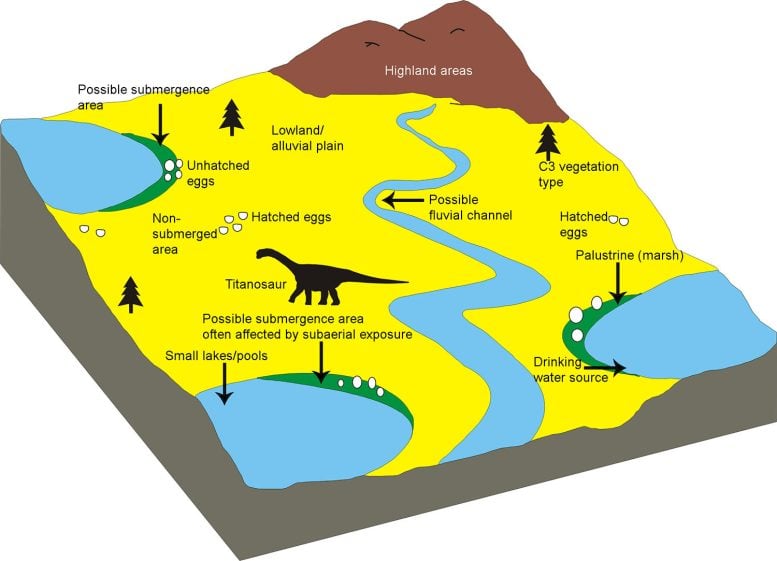
It is inferred that some of the clutches were laid close to the banks of the aquatic bodies (lakes/ponds) while others were deposited away from the lakes or ponds. The clutches laid close to the margins were prone to frequent submergence by water and thus got buried under sediment and remained unhatched, while the clutches laid away from the margins could hatch and hence showed more broken eggshells. Credit: Dhiman et al., 2023, PLOS ONE, CC-BY 4.0
The authors identified six different egg-species (oospecies), suggesting a higher diversity of titanosaurs than is represented by skeletal remains from this region. Based on the layout of the nests, the team inferred that these dinosaurs buried their eggs in shallow pits like modern-day crocodiles. Certain pathologies found in the eggs, such as a rare case of an “egg-in-egg”, indicate that titanosaur sauropods had a reproductive physiology that parallels that of birds and possibly laid their eggs in a sequential manner as seen in modern birds. The presence of many nests in the same area suggests these dinosaurs exhibited colonial nesting behavior like many modern birds. But the close spacing of the nests left little room for adult dinosaurs, supporting the idea that adults left the hatchlings (newborns) to fend for themselves.
Details of dinosaur reproductive habits can be difficult to determine. These fossil nests provide a wealth of data about some of the largest dinosaurs in history, and they come from a time shortly before the age of dinosaurs came to an end. The insights gleaned from this study contribute significantly to paleontologists’ understanding of how dinosaurs lived and evolved.
Harsha Dhiman, the lead author of the research, adds: “Our research has revealed the presence of an extensive hatchery of titanosaur sauropod dinosaurs in the study area and offers new insights into the conditions of nest preservation and reproductive strategies of titanosaur sauropod dinosaurs just before they went extinct.”
Guntupalli V.R. Prasad, co-author and leader of the research team, adds: “Together with dinosaur nests from Jabalpur in the upper Narmada valley in the east and those from Balasinor in the west, the new nesting sites from Dhar District in Madhya Pradesh (Central India), covering an east-west stretch of about 1000 km, constitute one of the largest dinosaur hatcheries in the world.”
Reference: “New Late Cretaceous titanosaur sauropod dinosaur egg clutches from lower Narmada valley, India: Palaeobiology and taphonomy” by Harsha Dhiman, Vishal Verma, Lourembam R. Singh, Vaibhav Miglani, Deepak Kumar Jha, Prasanta Sanyal, Sampat K. Tandon and Guntupalli V. R. Prasad, 18 January 2023, PLOS ONE.
DOI: 10.1371/journal.pone.0278242
Funding: HD – Shyama Prasad Mukherjee Fellowship from Council of Scientific & Industrial Research, New Delhi. GVRP – JC Bose Fellowship from Science and Engineering Research Board, New Delhi. The funders had no role in study design, data collection and analysis, decision to publish, or preparation of the manuscript.

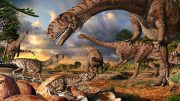
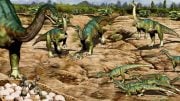
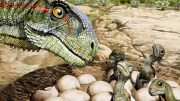

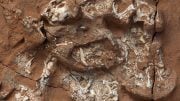


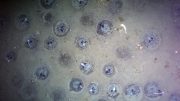
Be the first to comment on "Belonging to Some of the Largest Dinosaurs Ever: Researchers Uncover 92 Fossil Nests"